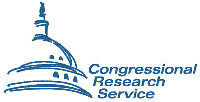United States Congress

Congressional Research Service Reports
Date of this Version
2007
Abstract
Embryonic stem cells have the ability to develop into virtually any cell in the body, and they may have the potential to treat medical conditions such as diabetes and Parkinson’s disease. In August 2001, President Bush announced that for the first time, federal funds would be used to support research on human embryonic stem cells, but funding would be limited to “existing stem cell lines.” NIH has established a registry of 78 human embryonic stem cell lines that are eligible for use in federally funded research, but only 21 cell lines are currently available. Scientists are concerned about the quality and longevity of these 21 stem cell lines. NIH Director Elias Zerhouni stated before a Senate subcommittee in March 2007 that research advancement requires access to new human embryonic stem cell lines.
Some have argued that adult stem cells (from bone marrow or umbilical cord blood) should be pursued instead of embryonic stem cells because they believe the derivation of stem cells from embryos is ethically unacceptable. The NIH Director and many other scientists believe adult stem cells should not be the sole target of research because of important scientific and technical limitations. Reports issued by NIH and the Institute of Medicine state that both embryonic and adult stem cell research should be pursued. Some scientists are exploring the possibility of obtaining human embryonic stem cells that bypass the destruction of living human embryos. The President’s Council on Bioethics cited four potential alternative sources of human embryonic stem cells in a May 2005 paper. A number of pro-life advocates support stem cell research; those opposed are concerned that stem cell isolation requires embryo destruction.
On January 11, 2007, the House passed H.R. 3 (DeGette) on a vote of 253 to 174. H.R. 3 would allow federal support of research that utilizes human embryonic stem cells regardless of the date on which the stem cells were derived from a human embryo, and thus negate the August 2001 Bush stem cell policy limitation. On April 11, 2007, the Senate passed S. 5 (Reid), which has the same text as H.R. 3 and an additional section supporting research on alternative human pluripotent stem cells. The Senate also passed S. 30 (Coleman) on April 11, 2007. Unlike H.R. 3 and S. 5, S. 30 provides support only for research on alternative human pluripotent stem cells. (The 109th Congress passed legislation identical to H.R. 3, H.R. 810 (Castle), but President Bush vetoed it, the first veto of his presidency. An attempt in the House to override the veto was unsuccessful.) On the related issue of human cloning, S. 812 (Hatch) would ban human reproductive cloning but allow for the therapeutic uses of the technique provided that a number of ethical requirements are observed. In contrast, the Weldon bill (which passed the House in the 107th and 108th Congresses) and S. 1036 (Brownback) would ban not only reproductive applications, but also research on therapeutic uses, which has implications for stem cell research. Advocates of the legislative ban say that allowing any form of human cloning research to proceed raises serious ethical issues, and will inevitably lead to the birth of a baby who is a human clone. Critics argue that the measure would curtail medical research and prevent Americans from receiving life-saving treatments created overseas. This report will be updated as needed.


Comments
Published by Congressional Research Service, www.crs.gov, RL33540